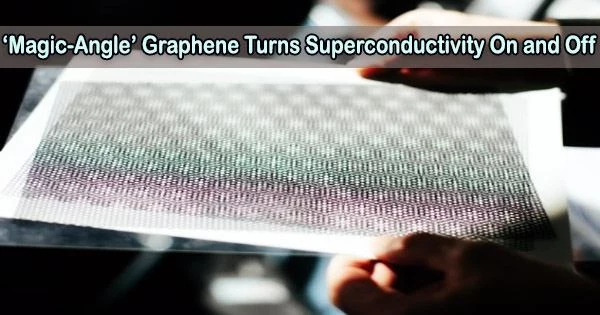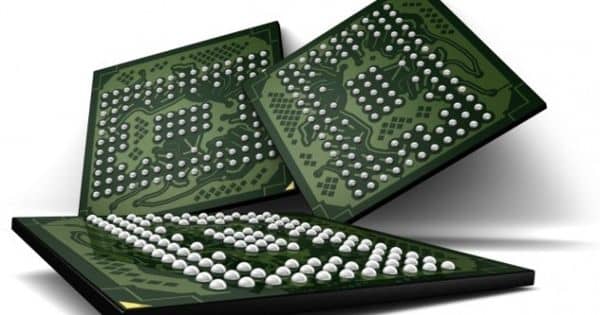Superconductivity that can be turned on and off with an electric pulse, much like a light switch, has been discovered in “magic-angle” graphene by MIT scientists after some careful twisting and stacking.
The finding may pave the way for extremely quick, energy-efficient superconducting transistors for neuromorphic electronics, which mimic the rapid on/off firing of neurons in the human brain.
Magic-angle The term “grapheme” refers to a highly specific stacking of graphene, an atom-thin substance comprised of carbon atoms that are connected in a chicken-wire-like hexagonal arrangement.
A superlattice, or slightly off-centered “moiré” pattern, is produced when two graphene sheets are stacked on top of one another at a specific “magic” angle. This superlattice can enable a variety of unexpected electrical behaviors.
In 2018, Pablo Jarillo-Herrero and his group at MIT were the first to demonstrate magic-angle twisted bilayer graphene. They demonstrated that, when a specific continuous electric field was applied, the novel bilayer structure might behave as an insulator, much like wood. The insulator instantly changed into a superconductor when the field was increased, allowing electrons to move without resistance.
This discovery gave rise to the subject of “twistronics,” which studies how specific electronic properties result from twisting and layering two-dimensional materials. Magic-angle graphene has continued to exhibit remarkable features, including numerous methods to convert the substance between multiple electronic states, according to researchers like Jarillo-Herrero. Such “switches” have so far behaved more like dimmers, requiring constant application of an electric or magnetic field to turn on and maintain superconductivity.
Now Jarillo-Herrero and his team have shown that superconductivity in magic-angle graphene can be switched on, and kept on, with just a short pulse rather than a continuous electric field. The key, they found was a combination of twisting and stacking.
For the vast majority of materials, if you remove the electric field, zzzzip, the electric state is gone. This is the first time that a superconducting material has been made that can be electrically switched on and off, abruptly. This could pave the way for a new generation of twisted, graphene-based superconducting electronics.
Professor Jarillo-Herrero
The team reports its findings in a paper that will be published in Nature Nanotechnology today. By sandwiching magic-angle graphene between two offset layers of boron nitride, a two-dimensional insulating material, the researchers were able to control the superconductivity of graphene using a brief electric pulse.
“For the vast majority of materials, if you remove the electric field, zzzzip, the electric state is gone,” says Jarillo-Herrero, who is the Cecil and Ida Green Professor of Physics at MIT. “This is the first time that a superconducting material has been made that can be electrically switched on and off, abruptly. This could pave the way for a new generation of twisted, graphene-based superconducting electronics.”
His MIT co-authors are lead author Dahlia Klein, Li-Qiao Xia, and David MacNeill, along with Kenji Watanabe and Takashi Taniguchi of the National Institute for Materials Science in Japan.
Flipping the switch
2019 saw the discovery that magic-angle graphene could be forced into a ferromagnetic condition by a team at Stanford University. Ferromagnets are substances that continue to be magnetic even in the absence of an applied magnetic field from the outside.
The scientists discovered that ferromagnetic characteristics could be switched on and off in magic-angle graphene. This occurred when the graphene sheets were sandwiched between two layers of boron nitride, with the graphene’s crystal structure aligned with one of the layers.
The configuration resembled a cheese sandwich in which the orientations of the top piece of bread and the cheese are aligned, but the bottom slice is rotated at a random angle with regard to the top slice. The result intrigued the MIT group.
“We were trying to get a stronger magnet by aligning both slices,” Jarillo-Herrero says. “Instead, we found something completely different.”
The team created a sandwich in their current investigation by precisely angling and stacking the elements. The sandwich’s “cheese” was made up of two graphene sheets with a “magic” angle of 1.1 degrees, with the top sheet rotating slightly with regard to the bottom sheet.
The top graphene sheet was perfectly aligned with a layer of boron nitride that was placed above this configuration. Finally, they added a second layer of boron nitride to the bottom of the entire structure, offset from the top layer by 30 degrees.
After applying a gate voltage, the scientists measured the graphene layers’ electrical resistance. They discovered, as have others, that at specific known voltages, the twisted bilayer graphene transitioned between insulating, conducting, and superconducting states.
The researchers did not anticipate bistability, a feature that causes each electronic state to endure rather than vanish instantly when the voltage is withdrawn. They discovered that the graphene layers became a superconductor at a specific voltage and remained a superconductor even after this voltage was removed.
According to this bistable phenomenon, superconductivity may be switched on and off by using brief electric pulses as opposed to a constant electric field, much like a light switch. The reason for this switchable superconductivity is unknown, but the researchers believe it may have something to do with the unique alignment of the twisted graphene to both boron nitride layers, which makes the system respond in a ferroelectric-like manner
“By paying attention to the stacking, you could add another tuning knob to the growing complexity of magic-angle, superconducting devices,” Klein says.
The group now views the new superconducting switch as an additional tool that scientists can take into account when they create materials for quicker, smaller, and more energy-efficient devices.
“People are trying to build electronic devices that do calculations in a way that’s inspired by the brain,” Jarillo-Herrero says. “In the brain, we have neurons that, beyond a certain threshold, they fire. Similarly, we now have found a way for magic-angle graphene to switch superconductivity abruptly, beyond a certain threshold. This is a key property in realizing neuromorphic computing.”
This research was supported in part by the Air Force Office of Scientific Research, the Army Research Office, and the Gordon and Betty Moore Foundation.
















